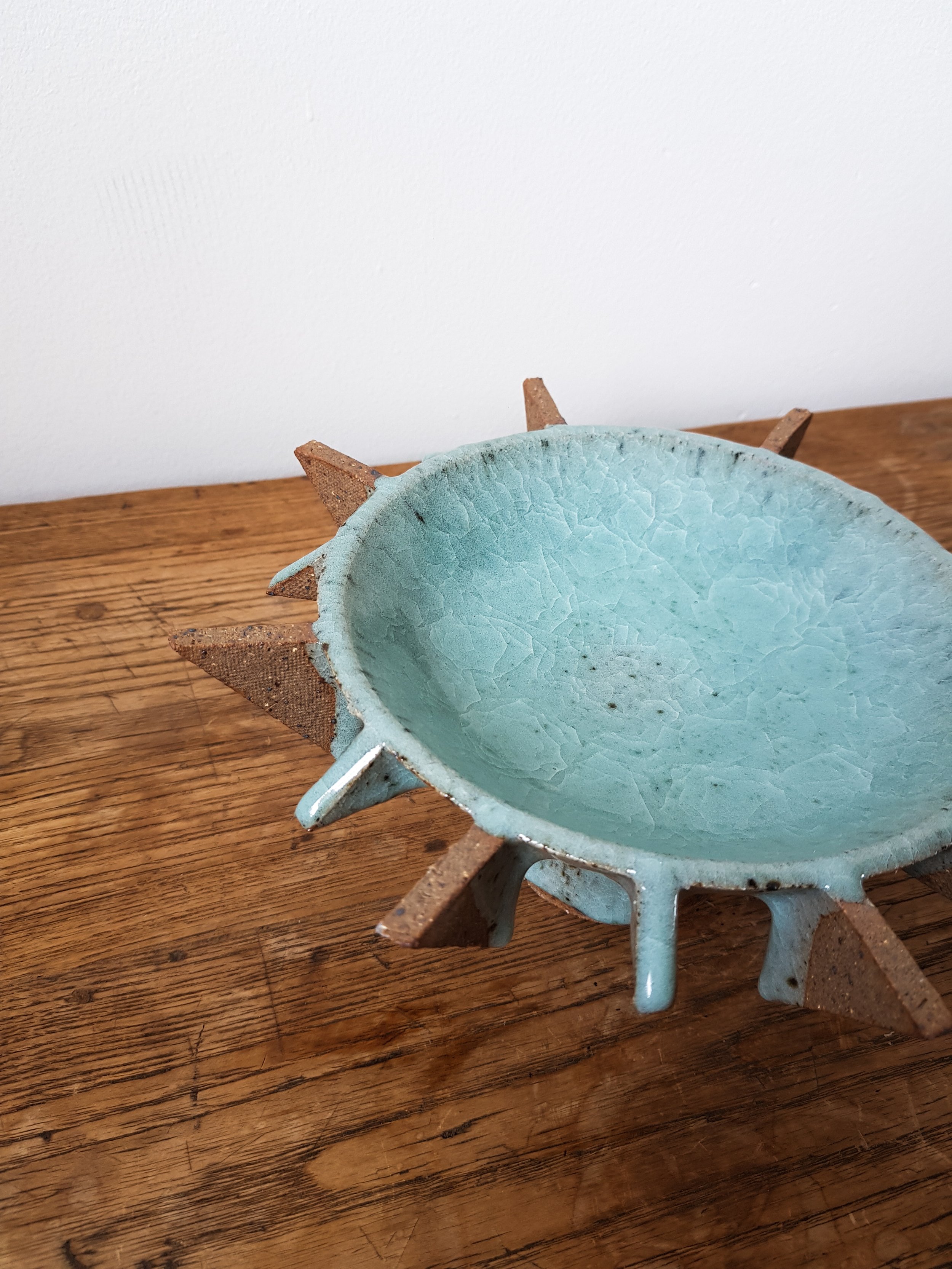

Celadon dates back to 25AD in China, now known as celadon which was coined by the Europeans around 1600s. Celadon traditionally ranges from a pale green to an intense deep green, mimicking jade which is one of the most valued materials in Chinese culture. Its typical characteristics can usually be achieved in a reduction kiln atmosphere - where oxygen is starved from the gas fire, resulting in the fire feeding on the oxygen within the ceramic bodies, converting metallic oxides into their reduced metallic states which produce vibrant, intense and beautiful colours and textures.
Celadon can also be produced in a variety of colours, including white, grey, blue and even yellow depending on various factors such as the chemical make up of the glaze, application thickness and clay body, temperature, and the reduction environment of the kiln.
I remember fondly the first time used a celadon glaze in 2006 when I enrolled in a pottery course at my local gallery. I had no idea of its history and origins, but I knew I felt a deep pull and would keep revisiting it.
This body of work was then conceived in 2018 while I was enrolled at School of Clay and Art, learning about reduction firing and celadon glazes. That was the beginning of my journey reconnecting with my Chinese heritage and culture through my practice, altogether acknowledging that my ancestors perfected this art form, and they continue to nurture my desire to pay homage to my culture past, present and future.









This work was part of ‘Make or Break’, a group exhibition presented by Craft Victoria for the Craft Cubed Festival 2019 and exhibited at Brunswick Street Gallery VIC.


